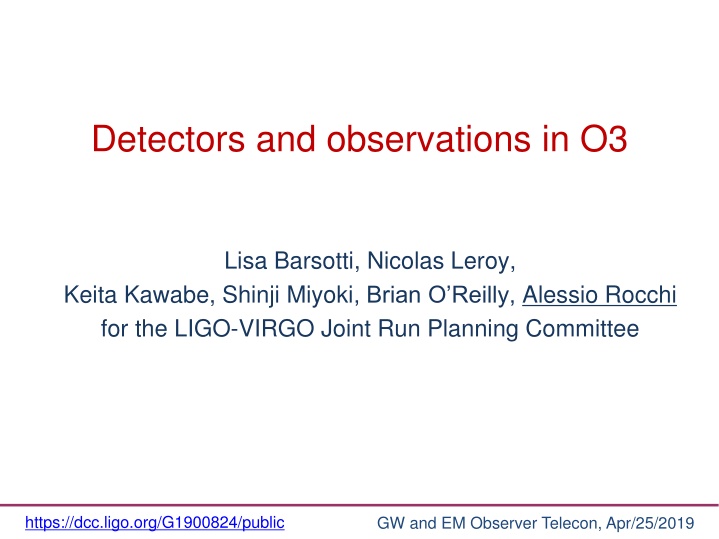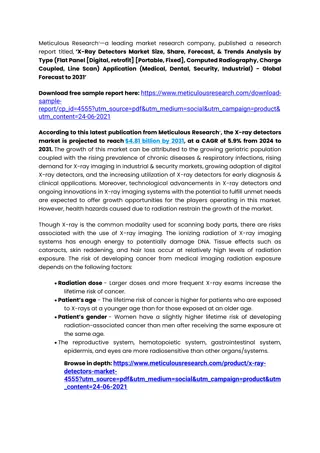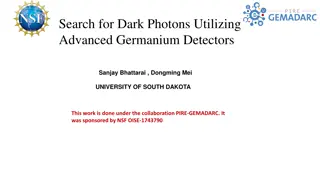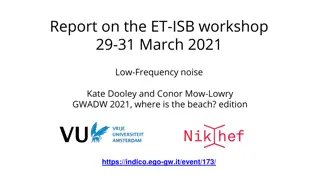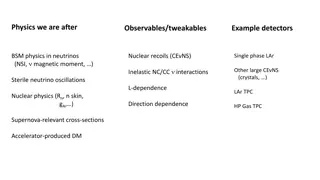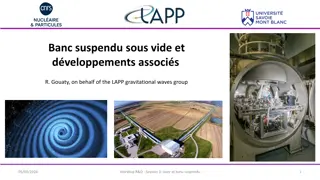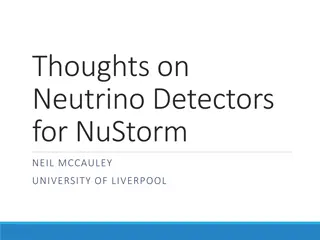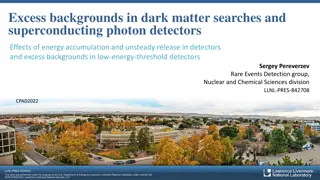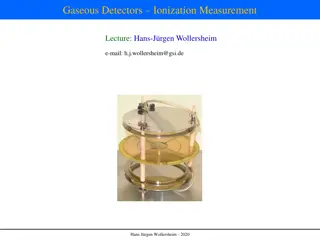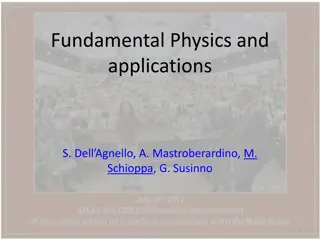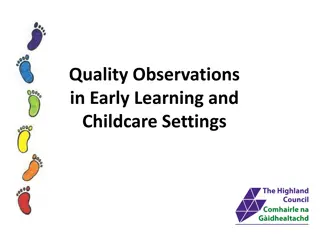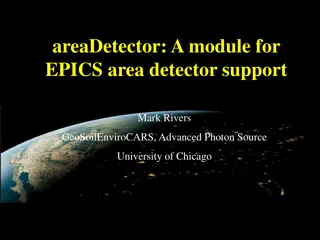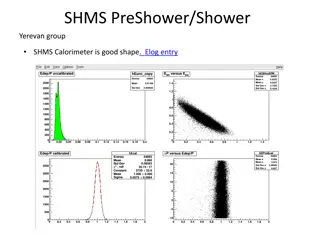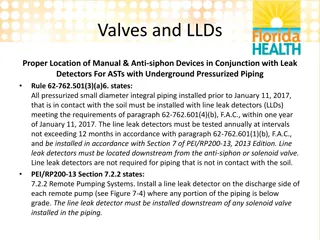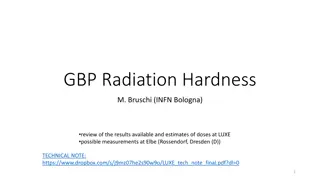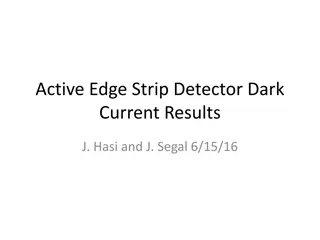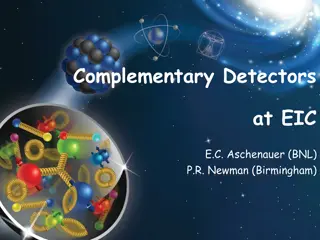Detectors and Observations in O3: Status Updates and Improvements
This update provides insights into the detectors and observations in O3, highlighting the instruments' status, improved noise performance, and LIGO improvements for O3 operations. It covers the coordination between sites, maintenance schedules, and the overall success of the observing phase. With enhancements such as higher laser power, test mass replacements, and squeezed light injection systems, O3 shows promise for better sensitivity and efficiency compared to O2. The data presented in this update offer a comprehensive view of the progress and advancements in gravitational wave detection.
Download Presentation

Please find below an Image/Link to download the presentation.
The content on the website is provided AS IS for your information and personal use only. It may not be sold, licensed, or shared on other websites without obtaining consent from the author.If you encounter any issues during the download, it is possible that the publisher has removed the file from their server.
You are allowed to download the files provided on this website for personal or commercial use, subject to the condition that they are used lawfully. All files are the property of their respective owners.
The content on the website is provided AS IS for your information and personal use only. It may not be sold, licensed, or shared on other websites without obtaining consent from the author.
E N D
Presentation Transcript
Detectors and observations in O3 Lisa Barsotti, Nicolas Leroy, Keita Kawabe, Shinji Miyoki, Brian O Reilly, Alessio Rocchi for the LIGO-VIRGO Joint Run Planning Committee https://dcc.ligo.org/G1900824/public https://dcc.ligo.org/G1900824/public GW and EM Observer Telecon, Apr/25/2019
24 days, 3 public alerts. S190408an S190412m S190421ar https://gracedb.ligo.org/ https://dcc.ligo.org/G1900824/public https://dcc.ligo.org/G1900824/public GW and EM Observer Telecon, Apr/25/2019
O3 and Instruments Status O3 started in time on Mon Apr. 1st 2019 Better sensitivity than O2 for all 3 instruments. As planned, shorter than usual commissioning time at all three sites for the first week. Coordination between the sites to maximize 3-IFO operation. Planned down time for: Tuesday maintenance: 6-10 UTC for V1, 14-18 UTC for L1 and 15-19 UTC for H1 (with seasonal changes due to summer time); Calibration on Wednesday: 15-19 UTC @ V1 and 20-23 UTC @ LIGO At least one instrument tries to remain online at any given time. Very good triple coincidence OBSERVING so far, about 40%. Only 1.1% with no interferometer in observation mode. At least two interferometers 80% of the time. We WILL spend time on problems that need immediate attention, or if we think we can make significant improvement in short period. https://dcc.ligo.org/G1900824/public https://dcc.ligo.org/G1900824/public GW and EM Observer Telecon, Apr/25/2019
https://www.gw-openscience.org/detector_status/ https://dcc.ligo.org/G1900824/public https://dcc.ligo.org/G1900824/public GW and EM Observer Telecon, Apr/25/2019
Improved Noise Performance First three weeks of O3 O2 https://dcc.ligo.org/G1900824/public https://dcc.ligo.org/G1900824/public GW and EM Observer Telecon, Apr/25/2019
Reminder: LIGO improvements for O3 Higher laser power Replaced 5 of 8 test masses (better optical quality) Added squeezed light injection systems New baffles to mitigate scattered light Improvements to various controls systems (seismic, alignment, etc) https://dcc.ligo.org/G1900824/public https://dcc.ligo.org/G1900824/public GW and EM Observer Telecon, Apr/25/2019
H1: O2 vs O3 O2 O2 cleaned O3 10-21 Strain (Hz-1/2) 10-22 10-23 10-24 101 102 103 Frequency (Hz) https://dcc.ligo.org/G1900824/public https://dcc.ligo.org/G1900824/public GW and EM Observer Telecon, Apr/25/2019
Current detector performance: H1 2.2dB of squeezing + 35W Higher recycling gain (~45 as opposed to ~35). Mirror replacement paid off. No major bumps/peaks from the laser (unlike O2). Longer planned downtime for the first month or so to perform various investigations. Will be back to normal schedule in a couple weeks. Calibration, environment noise, glitches, lock losses, upconversion from wind and EQ, stability, larger low frequency noise than L1. Good duty factor (68%) despite this. Very good considering that this is the start of the run. https://dcc.ligo.org/G1900824/public https://dcc.ligo.org/G1900824/public GW and EM Observer Telecon, Apr/25/2019
L1: O2 vs O3 O2 O3 10-21 Strain (Hz-1/2) 10-22 10-23 10-24 101 102 103 Frequency (Hz) https://dcc.ligo.org/G1900824/public https://dcc.ligo.org/G1900824/public GW and EM Observer Telecon, Apr/25/2019
Current detector performance: L1 Sensitivity impacted by seismic noise: microseism, wind, human-induced daytime activity. Work continues on increasing robustness to improve duty cycle. Budgeting 4-6 hours a week for tests and investigations. Calibration systematics at the 2% level. Weekly measurements to improve statistical accuracy (currently around 5%). https://dcc.ligo.org/G1900824/public https://dcc.ligo.org/G1900824/public GW and EM Observer Telecon, Apr/25/2019
Reminder: Virgo improvements for O3 Higher laser power All test masses suspended with fused silica fibers Intracavity power improved with adaptive optics Injection bench suspension activated Added squeezed light injection systems Scattered light mitigation on output optics New high quantum efficiency PDs with optimized electronics Improvements to various controls systems (seismic, alignment, etc) https://dcc.ligo.org/G1900824/public https://dcc.ligo.org/G1900824/public GW and EM Observer Telecon, Apr/25/2019
V1: O2 vs O3 https://dcc.ligo.org/G1900824/public https://dcc.ligo.org/G1900824/public GW and EM Observer Telecon, Apr/25/2019
Current detector performance: V1 Good (>90%) duty cycle in science mode Rather stable sensitivity: about 50 Mpc for BNS; around 600 Mpc for 30 Msol BBH Glitch rate greatly reduced wrt O2; Highest science mode state comprises injection of squeezing (up to 3 dB), but science mode state without squeezing is also possible; Short commissioning breaks (order of few hours) planned on a weekly basis to improve both sensitivity and robustness; One week of O2 Two weeks of O3 https://dcc.ligo.org/G1900824/public https://dcc.ligo.org/G1900824/public GW and EM Observer Telecon, Apr/25/2019
KAGRA, the Japanese cryogenic detector, is expected to join late 2019 Oct/Nov 2018: 3km X-arm locked using IR and green. EXC mirror trouble after that, chamber was opened, now pumping down. IXC mirror is being cooled down. Apr 2019: 3km Y-arm locked using green at cryogenic temperature. IYC is already fully cooled down. Still cooling EYC. Control optimizations undergoing for cryogenic suspensions. 40W fiber laser, 10W after input mode cleaner. Long term stability under investigation. Will start combining two arms using Michelson ~mid May 2019, will transition to the final configuration later. Detailed study of the impact of adding KAGRA to LV network is ongoing. https://dcc.ligo.org/G1900824/public https://dcc.ligo.org/G1900824/public GW and EM Observer Telecon, Apr/25/2019
Current KAGRA schedule for O3 O3 start 2019 Jan Feb Mar Apr May Jun Jul Aug Sep Oct Nov Dec Noise hunting PR MI Machine Health Check Pumping Beam Align Pumping Yarm FPMI DRMI DRFPMI Post Comm. DRFPMI ASC Laser Power Up Middle Baffle O3 Joining If possible Payload Control ETMX WAB Weekend run Weekend FPMI Run Cooling 3 TMs Cooling ETMX FPMI Check Point Data Process Rehearsal https://dcc.ligo.org/G1900824/public https://dcc.ligo.org/G1900824/public GW and EM Observer Telecon, Apr/25/2019
Summary First 24 days excellent with 3 public alerts. Good noise performance, extremely good V1 duty factor, good LIGO duty factor. KAGRA is planning to join later this year. Projected observation period of O3: 1 Calendar year (nominally ends at the end of March). Nothing is concrete yet, but if we ever decide to make a break of ~weeks and if we shift the end date, how much advance notice do you need? Please respond to our email inquiry. https://dcc.ligo.org/G1900824/public https://dcc.ligo.org/G1900824/public GW and EM Observer Telecon, Apr/25/2019
